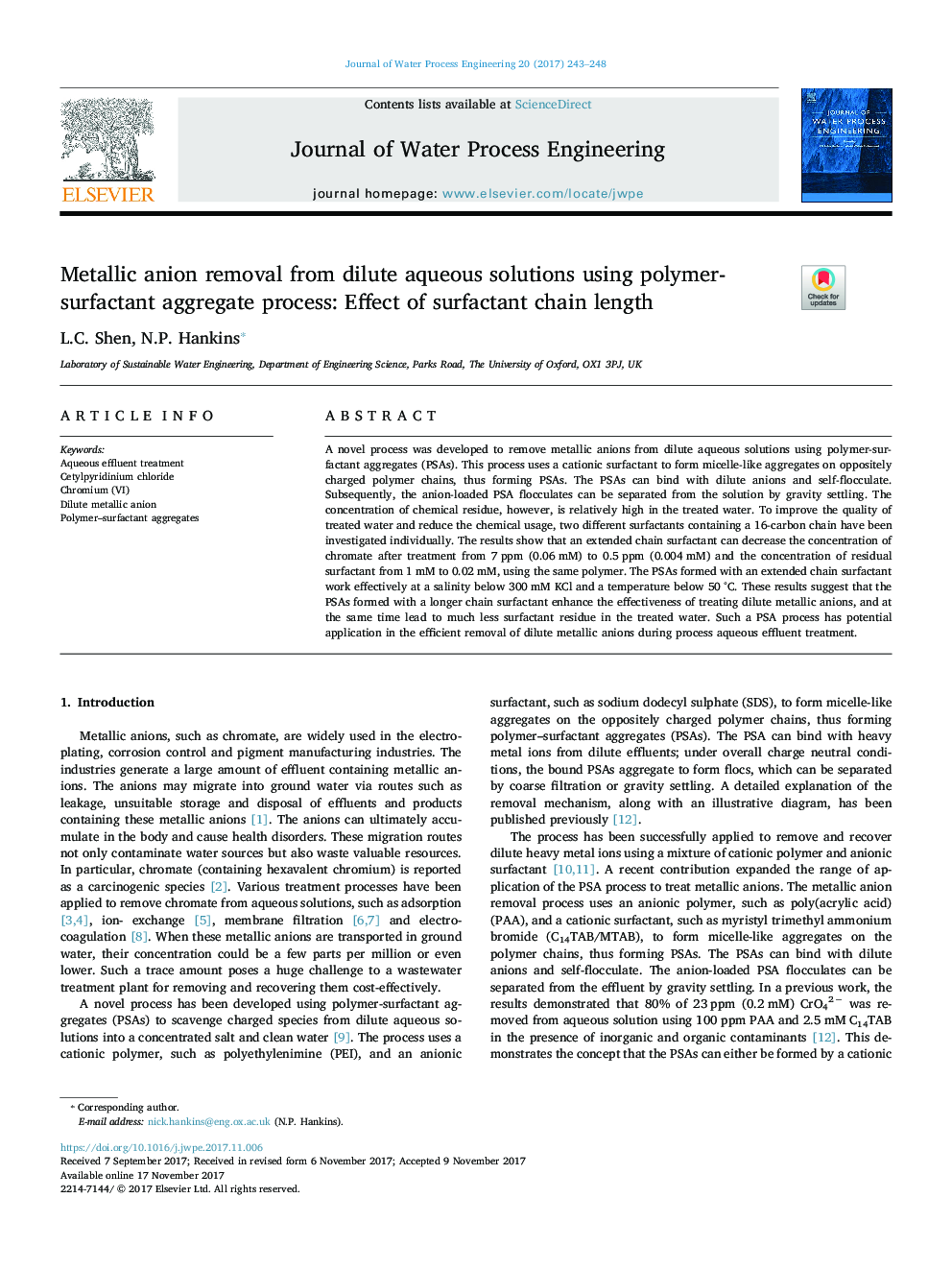| کد مقاله | کد نشریه | سال انتشار | مقاله انگلیسی | نسخه تمام متن |
|---|---|---|---|---|
| 6672066 | 1427552 | 2017 | 6 صفحه PDF | دانلود رایگان |
عنوان انگلیسی مقاله ISI
Metallic anion removal from dilute aqueous solutions using polymer-surfactant aggregate process: Effect of surfactant chain length
ترجمه فارسی عنوان
حذف آنیون فلزی از محلول های آبی رقیق شده با استفاده از پلیمر-سورفاکتانت فرآیند: اثر طول زنجیره سوراخ کاری
دانلود مقاله + سفارش ترجمه
دانلود مقاله ISI انگلیسی
رایگان برای ایرانیان
موضوعات مرتبط
مهندسی و علوم پایه
مهندسی شیمی
مهندسی شیمی (عمومی)
چکیده انگلیسی
A novel process was developed to remove metallic anions from dilute aqueous solutions using polymer-surfactant aggregates (PSAs). This process uses a cationic surfactant to form micelle-like aggregates on oppositely charged polymer chains, thus forming PSAs. The PSAs can bind with dilute anions and self-flocculate. Subsequently, the anion-loaded PSA flocculates can be separated from the solution by gravity settling. The concentration of chemical residue, however, is relatively high in the treated water. To improve the quality of treated water and reduce the chemical usage, two different surfactants containing a 16-carbon chain have been investigated individually. The results show that an extended chain surfactant can decrease the concentration of chromate after treatment from 7 ppm (0.06 mM) to 0.5 ppm (0.004 mM) and the concentration of residual surfactant from 1 mM to 0.02 mM, using the same polymer. The PSAs formed with an extended chain surfactant work effectively at a salinity below 300 mM KCl and a temperature below 50 °C. These results suggest that the PSAs formed with a longer chain surfactant enhance the effectiveness of treating dilute metallic anions, and at the same time lead to much less surfactant residue in the treated water. Such a PSA process has potential application in the efficient removal of dilute metallic anions during process aqueous effluent treatment.
ناشر
Database: Elsevier - ScienceDirect (ساینس دایرکت)
Journal: Journal of Water Process Engineering - Volume 20, December 2017, Pages 243-248
Journal: Journal of Water Process Engineering - Volume 20, December 2017, Pages 243-248
نویسندگان
L.C. Shen, N.P. Hankins,
